Is it the mask?
I’ve asked myself this question for years, trying to understand my fascination for fencing – a sport I’ve never practiced nor seen in person. If it is the mask, is it the mystery of it? The fact that behind it hides an unknown person with a weapon in their hand, and I can’t discern their true intentions? Perhaps it’s just the black-and-white contrast of the attire. After all, orcas terrify me.
Or maybe it’s the speed. If it weren’t for slow-motion replays, this occasional Olympics spectator could never distinguish who did what when. And who wouldn’t aspire to be that quick? I wondered if I could learn it, and maybe apply it to other areas of my life. Could I become quicker, stronger? Could I at least learn to parry life’s blows? One fateful autumn day, I set out to try.
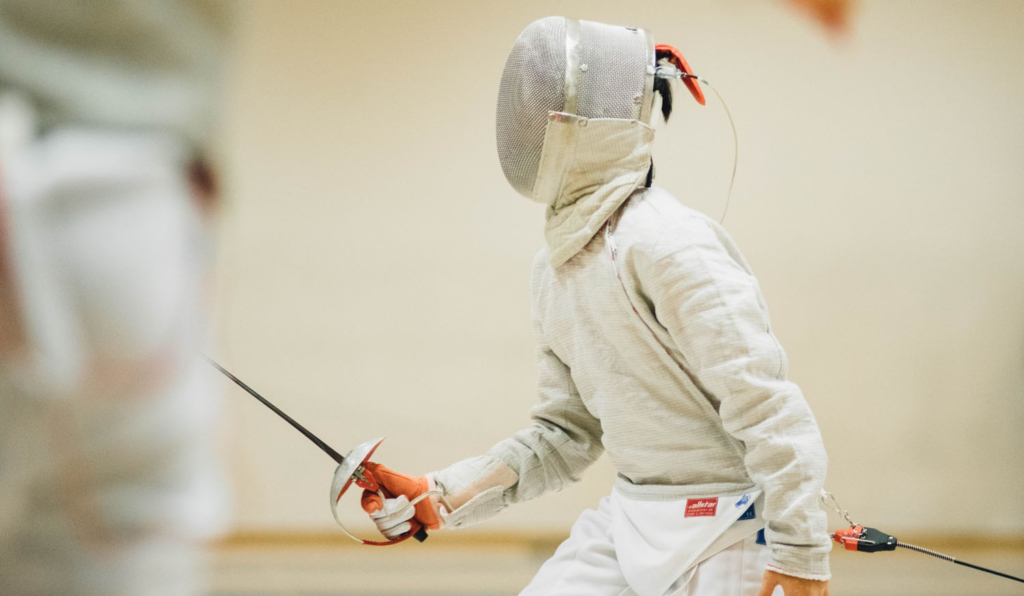
What strikes me the most about my maître d’armes (ie. fencing trainer) upon first meeting him are his grace, his posture. His, well, grandeur. He stands straight and confident, emanating authority. I can’t put my finger on what it is exactly, but I know I want to follow him.
True to his comportment, he explains that in his training hall, it’s all about respect. Kids are not allowed to run around, be too loud, or forget to greet others when arriving and say goodbye when leaving. It’s a necessity, I assume, since there are weapons involved – although none of them are sharp – but I get the feeling there’s more to it.
After warming up and practising my coordination as well as my hitting speed (with my bare hands) on an electronic fencing target, it’s finally time to get my weapon, and I have butterflies in my stomach. I am about to use an épée, the easiest fencing weapon for adults to start with.
In fact, three types of swords are used in fencing, resulting in three different disciplines:
Foil
The goal of foil fencers is to hit the upper body, excluding arms and neck, with the tip of the sword. This is the smallest weapon of the three (max 500 grammes), and the one kids start with. To quickly identify foil fencers, look for the electrically conductive vest, or lamé.
Sabre
The goal of sabre fencers is to hit any place above the waistline, with any part of the sword, which leads to spectacularly rapid matches characterised by slashing, as opposed to the slower, more technical tip-thrusting of foil and épée fencers. The sabre is as light as the foil (max 500 grammes). To quickly identify sabre fencers, look for the lamé covering the chest and arms, as opposed to the armless vest used in foil fencing.
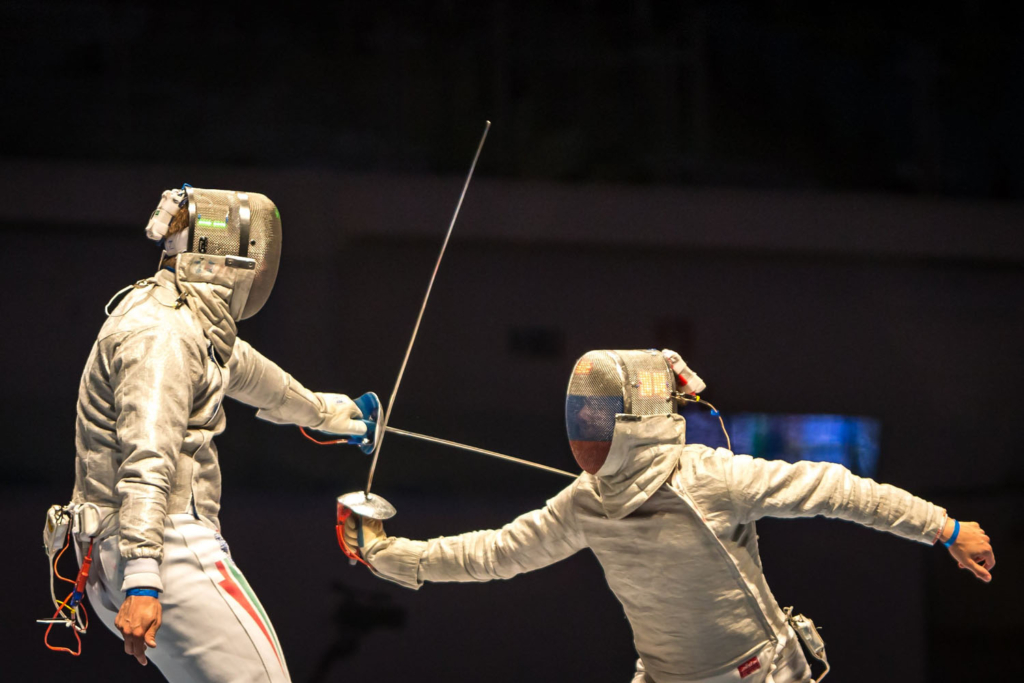
Épée
The goal of épée fencers is to hit the entire body with the tip of the sword. This is the heaviest weapon of the three (max 750 grammes), and has a bigger hand guard (called a bell guard) than the others, since the hand itself is a valid target. To quickly identify épée fencers, look for their uniform, all-white attire.
After getting familiar with my weapon, it’s time to don the fencing gear. Fencing clubs usually let their members rent all necessary equipment, therefore beginners don’t need to worry about buying it. All you need to have are a pair of sneakers, athletic attire for warming up, and possibly an undershirt and a pair of shorts to wear under the gear (a word of advice: it’s warm). It takes a while to put everything on, but once I’m ready, I feel absolutely fantastic.
Now properly equipped, it’s time to train my stance. One foot forward, one behind to form a 90° angle, my head upright, I learn to lunge. I have to repeat this movement over and over again to get it right – this is not the time for speed, and I start to become a little impatient. I learn to hold my épée with the tip slightly pointed downwards, all while opening my arm a bit outward to parry any hits directed at it. The order in which I need to move my feet also feels unnatural at first, but I quickly realise it’s necessary – else I’ll lose my balance.
At last, I’m ready, and my hard work pays off. I’m rewarded by my first “En garde!”, with the immense privilege of having it pronounced by maître d’armes and France’s former Olympic trainer Maurice Pizay. Somehow, I manage not to melt right then and there, but behind my mask is a big, wide smile.
Maître Pizay teaches me how to attack and parry – slowly, time and time again, with a lot of patience. It isn’t easy; there are so many things I need to pay attention to, and they’re mostly related to my body. It’s insightful and interesting, and I leave the training hall feeling exhilarated.
At the next training, I get thrown into the ring: I can now fight with other fencers. As I face an insecure teenager (who would go on, as expected, to absolutely destroy me), I am overwhelmed by the things I need to pay attention to. My posture, the order in which I need to move my feet, where I’m going to hit next, what the opponent is doing and how I’m going to parry their move. As I do, I realise a number of things about fencing which would ultimately make me fall in love with this sport:
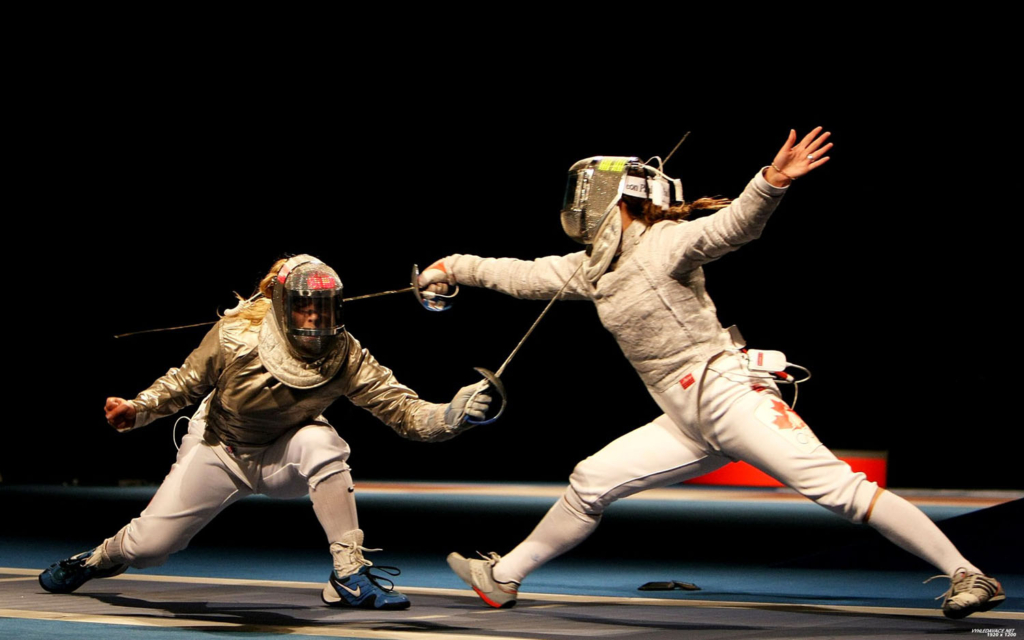
[Photo: Qrodo Photos/Flickr]
First and foremost, make no mistake: this is a combat sport. Which means there can be no hesitation. I need to move – no, I need to attack – constantly. And it’s not the same attacking as in basketball or soccer. It’s a physical fight, and most people simply aren’t used to it; to me, it’s uncomfortable at best. Yet, once I do manage to attack, I feel proud and strong. I am in control, I am fighting – there’s no room for fear.
Secondly, fencing absorbs me on so many levels, it’s impossible to think of anything else. Work and family troubles disappear from my thoughts. I am all-in – my body, my mind, even my intuition are all tensed in the effort. There is literally no capacity to worry about anything else. Fencing is a form of active meditation for the modern man and woman, one in which we at last reunite our bodies and minds and use them, together, to focus on the present moment. After my training sessions I feel deeply relaxed – where yoga failed me, fencing delivers.
Most of all, I realise that this sport has a special grace about it. It originated at a time when honour and respect were fundamental, even in a fight. I need to greet my opponent, get into specific positions, and avoid turning my back on them at all costs (a yellow card offense). My movements and manners are the result of hundreds of years of history, and they look light and graceful. Yes, it is all about respect – for the art itself and for the long tradition that precedes us. Fencing is a true ‘gentleman’s sport’, and getting to know it was a privilege. I can only recommend that you try it, too. En garde!
Special thanks to Maître d’Armes Maurice Pizay, President Isabelle Deville and the entire team at the Cercle Escrime Sud of Esch-sur-Alzette, Luxembourg.
[Pictured at right: Essentials contributor Livia Formisani]


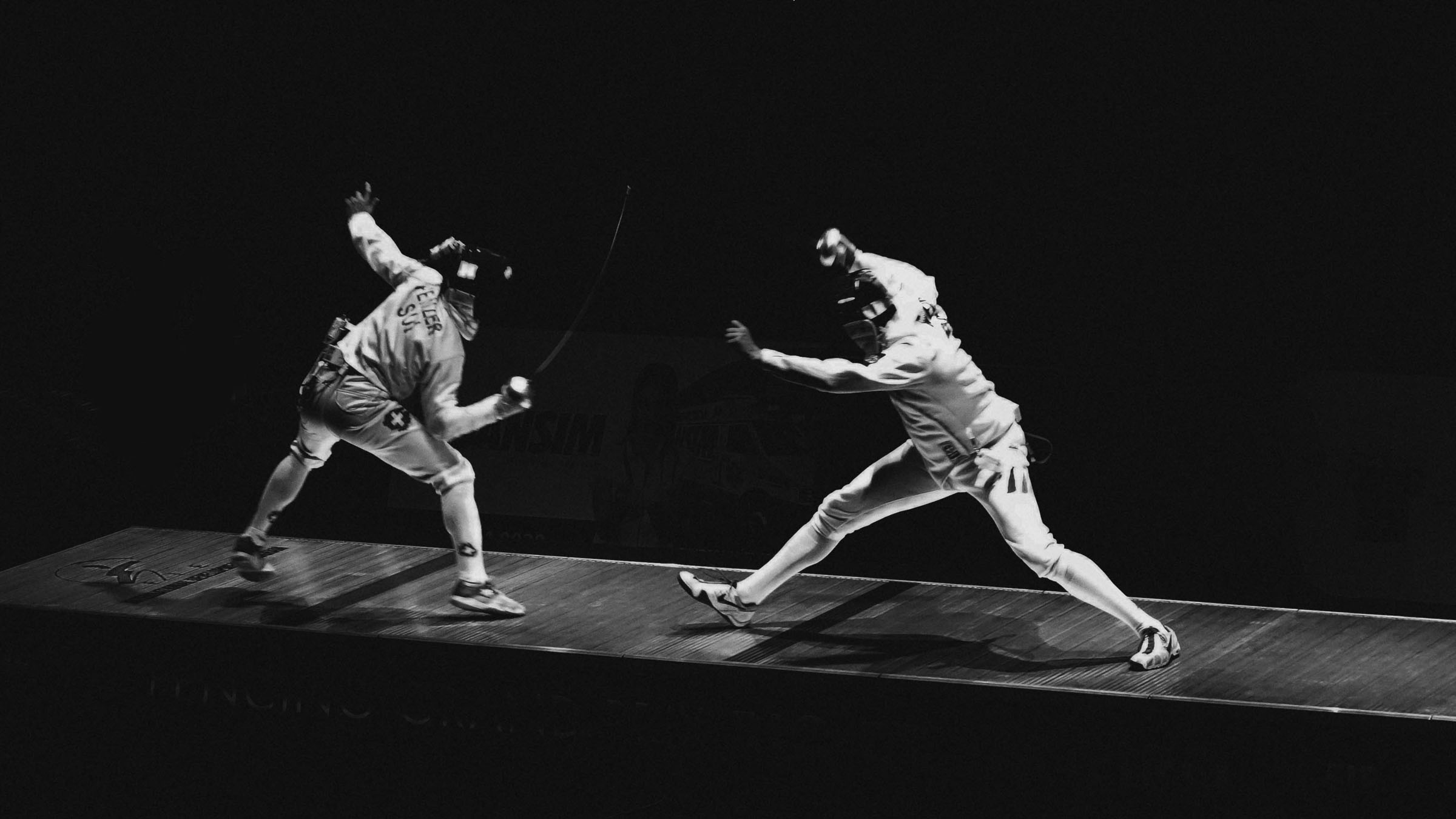

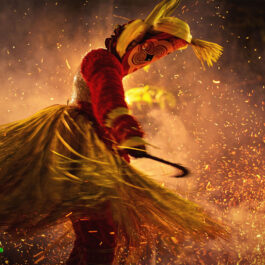










Sorry, the comment form is closed at this time.